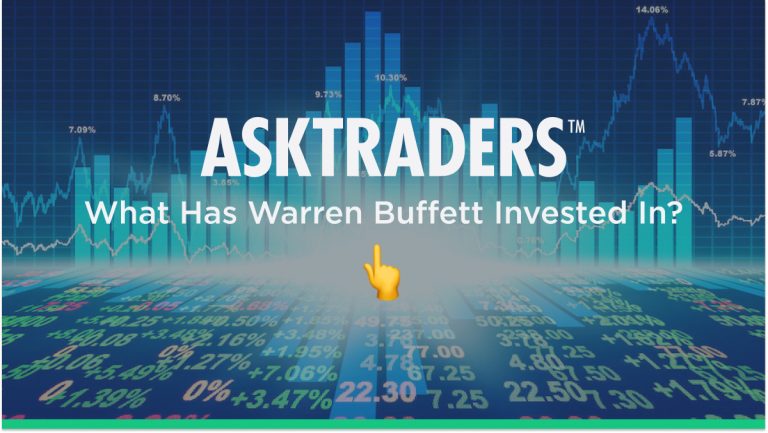
The ‘Oracle of Omaha’ has already sprung into action over the last few weeks as stocks were trading at discounted prices. If you want to know how to position your portfolio towards Warren Buffett stocks, it is important to understand some of his previous investments and where he would be looking for bargains. Let's consider what Warren Buffet would invest in, taking into account his prior business decisions.
Avoiding growth stocks protected Warren Buffett’s downside
Warren Buffett has always favoured traditional investments such as manufacturers, railroad stocks, banking institutions and food producers.
Buffett famously faced a lot of criticism for ignoring internet stocks during the dot-com bubble at the outset of this century. He is a traditional investment analyst who likes to see evidence of earnings growth and metrics in order to predict what will happen to the business in the future.
The legendary investor remarked that he didn’t like to invest in things that he did not understand. At the time, many internet stocks were seeing billion-dollar valuations despite not making a dollar of profit or having much in the way of employees or assets. His company’s shareholders were becoming anxious that the company was missing the boat on tech stocks.
A Forbes magazine article in May 2000 questioned whether Buffett had seen his best days in the stock market:
“Last year Buffett seemed to have lost his heavenly touch. This year Berkshire’s per share book value underperformed the S&P 500 index, by 20.5 percentage points – the first time in 20 years it lagged the index.”
(Source: CNN Money)
Buffett would ultimately have the last laugh, with the Nasdaq index crashing over the next 18 months, with a drop of 83%. Much of that collapse in tech stocks came less than eight months after the Forbes article.
Fast forward to 2022 and Buffett has managed to avoid the worst of the current pullback. The Berkshire Hathaway chairman and CEO was one of only two billionaires in the top 10 rich list to see their net worth rise year-to-date, according to Bloomberg.
Robert Johnson, finance professor at Creighton University, summed up the performance, saying of Buffett and his long-time investing partner Charlie Munger:
“So many of their businesses are these stable, unsexy companies that constantly produce cashflows and aren’t valued at above market multiples.”
By avoiding highly valued technology companies or market trends, his company benefits from a “flight to quality”, he added.
(Source: TheStreet)
To provide an example of this dynamic at play in the market, we can look at Netflix. The content-streaming service rose during the latest internet bubble through 2020-21, with the company picking up new investors that were stuck at home during pandemic lockdowns.
At the market’s peak in the final months of 2021, Netflix was valued by Wall Street at around $300bn. In May 2022, that had fallen to around $80bn.
The company and its service had not changed dramatically, but analysts had projected faster growth than the company could match in its earnings and lost some subscribers as the world reopened. Unfortunately, many investors would have bought the hype and be staring at big losses in the stock.
With a price-to-earnings ratio of 88x earnings in late 2021, Buffett would steer clear of such a valuation and avoided a $400m loss, like that of hedge fund billionaire Bill Ackman.

Start with the investment moat seen in all of Warren Buffett stocks
In the Netflix example above, Ackman cited some good reasons for owning Netflix in a letter to investors of his Pershing Square fund. Here are a few of those:
- Its subscription-based, highly recurring revenues, which have enormous future growth potential.
- A truly best-in-class management teamand unique high-performance culture.
- Economies of scale and superb quality in its industry-leading content, which should continue to drive future growth and widen the company’s powerful competitive moat.
We have placed emphasis on three that are always evident in Warren Buffett investments. Strong and predictable earnings, a very good management team and the competitive moat have been a focus of his investment strategy for decades.
Investopedia describes the moat as:
“A distinct advantage a company has over its competitors which allows it to protect its market share and profitability. It is often an advantage that is difficult to mimic or duplicate (brand identity, patents) and thus creates an effective barrier against competition from other firms.”
(Source: Investopedia)
Ackman found such an advantage evident in the business model of Netflix, but sadly he bought it at a valuation that was still too high.
If you are keen to snap up Netflix shares after its big correction, then check out this in-depth AskTraders research piece.
Some of the most famous Warren Buffett investments
“Our favorite holding period is forever.” Warren Buffett
(Source: Investopedia)
The quote about Buffett’s holding period epitomises his investment strategy as some of his most famous stock market investments are still in his portfolio after 30 years.
Buffett purchased Coca-Cola stock in 1988 and still holds the company today. The Coke investment is a great example of the three key components described previously, with the company attracting top-quality management, having recurring revenues in almost every country in the world, and having a competitive moat. Many drinks companies have tried to tackle the moat of Coke and perished, such as Richard Branson’s Virgin Cola brand.
See’s Candies is another company that Buffett has held for decades, and he still talked of highly of it at his 2022 annual shareholder meeting.
“We’ve owned that since 1972, and we love it, and we continue to love it,” he said.
(Source: Yahoo! News)
In talking about the company to Fortune magazine, the famed investor gave even more insight into his investment approach.
In 1972, See’s had $30m in annual sales with a profit of $4.2m. By 2014, that had grown to sales of $400m with profits of more than $82m.
“The key to See’s is that it requires low capital investment each year, it’s a reliable seasonal business with devoted customers, and it grows every year at a slow but consistent pace,” Fortune said.
“The ideal business is one that takes no capital, and yet, grows,” Buffett said at the 2016 annual meeting.
“We put $25 million into it and it’s given us over $2 billion of pretax income,” Buffett added.
(Source: Fortune)
Warren Buffett also likes to investment in financial companies with long-term holdings in corporations such as Wells Fargo, American Express and GEICO Insurance. However, he also likes industrial stocks such as railroads and logistics firms such as UPS because they fit his investment strategy and also provide some diversification in changing market climates.
Buffett still shunned technology and internet trends in 2009 with a big $34bn investment in Burlington Northern Railroad. He spoke to CNBC about the company’s role in hauling consumer and retail products:
“They do it in a cost-effective way and extraordinarily environmentally friendly way. I basically believe this country will prosper and you’ll have more people moving more goods 10 and 20 and 30 years from now, and the rails should benefit.”
(Source: CNBC)
A more recent Warren Buffett investment was in Occidental Petroleum. This is another example of how he goes against the grain. Wall Street and government policy is turning its back on traditional fossil fuel energy firms in order to chase greener forms of fuel. However, Buffett realised that it can’t happen overnight and took big stakes in Oxy and later, Chevron. In May 2022, Berkshire Hathaway held 143 million shares in Occidental at a valuation of over $9bn.

The hottest talking point in the markets at the time was inflation, and this is another example of how Buffett may be positioning his firm into a diversified market sector, which is potentially the start of a commodity supercycle.
Buffett said in a letter to shareholders that he was impressed by the company’s efforts to cut debt and position itself for further growth in its most recent earnings report.
“And what [CEO] Vicki Hollub was saying made nothing but sense. And I decided that it was a good place to put Berkshire’s money,” he said.
“She says she doesn’t know the price of oil next year. Nobody does. But we decided it made sense. And two weeks later, we had 14% of the company,” he added.
(Source: Oilprice.com)
Another thing that Buffett looks for in investments is dividends and Chevron has a strong dividend of 3.3%, which is much higher than the S&P 500’s average 1.8% dividend yield. The technology stocks that power higher on growth expectations provide no dividends and are often burning through shareholder cash at an alarming rate. Chevron and Occidental are mature and established companies that Buffett can understand when he reads their 10k statements.
Where would Warren Buffett invest his money now?
Inflation has been soaring in many countries due to supply chain issues created from the pandemic lockdowns, and recent geopolitical events.
Warren Buffett has warned investors of inflation before and said in a 1981 shareholder letter that investors should look for the following traits to offset inflation:
- The power to increase prices easily.
- The ability to take on more business without having to spend excessively.
(Source: Berkshire Hathaway)
These two comments highlight the benefit of Coca-Cola and See’s Candies in the ability to dodge the worst of inflation. The competitive moat that these companies benefit from means that consumer demand will not wane too much with a rise of 9% on a can of coke. Adding 10% on the price of a vehicle takes a larger dent from a consumer’s pocket, and Buffett avoided airline stocks for the same reason that price wars can lead to cost-cutting.
American Express, another long-term holding, demonstrated its own approach to pricing power with an increase in the annual fee for its Platinum Card from $550 to $695. The company saw revenue increasing by 29% in Q1 2022.
(Source: American Express)
When we talk of a competitive moat and pricing power, Apple must be one of the strongest in corporate America. Apple’s mobile devices and other products such as its AirPods listening devices are highly sought-after products, with the company having some leeway over pricing. A rise in prices can offset some declining demand as cost-of-living pressures lead some to scale back.
Apple is currently Berkshire’s largest publicly traded stock holding at almost 40% of the company’s portfolio by market value. The reason for such a large concentration was the price performance of the stock during the tech rally. Buffett bought more on a correction.
Speaking to CNBC, Buffett said that his company had purchased $600m of stock after a three-day decline.
“Unfortunately, the stock went back up, so I stopped,” Buffett said. “Otherwise who knows how much we would have bought?”
(Source: Forbes)

Although many technology stocks were trading at unrealistic valuations, the world’s most famous value investor obviously sees potential for further growth in Apple. The investor’s managerial focus was also discussed in a shareholder letter, with Buffett saying:
“Tim Cook, Apple’s brilliant CEO, quite properly regards users of Apple products as his first love, but all of his other constituencies benefit from Tim’s managerial touch as well.”
(Source: Forbes)
He also noted the company’s stock buyback strategy, which had given Berkshire increased ownership of Apple’s earnings without any extra cost. In 2021, the company spent $88.3bn on stock buybacks. Dividends are another big earner for Buffett, with Apple providing his company with around $775m in annual dividends.
(Source: YCharts)
Conclusion
After a golden age of inflation at 2% or lower, central banks are having to turn off the spigots of cheap money that have propelled growth stocks to record highs.
With inflation soaring, these stocks are now seeing their business models upended as consumers tighten their belts and input costs rise for others. Warren Buffett has moved to build his stakes in firms that are providing some key defence mechanisms against rising costs and they have been the pillars of his investment strategy for decades:
- The power to increase prices easily (Apple, Coca-Cola, American Express).
- The ability to take on more business without having to spend excessively (Apple, stock buybacks).
- Commodity price advantage (Occidental, Chevron).
All of these investments also have the benefit of being traditional businesses with easy-to-read 10k financial statements and business models that do not rely on the latest fad. In the energy stock examples, dividends are being protected by higher commodity prices and all the companies in the Buffett portfolio have management making sound decisions to balance the company’s debts and have leeway to lower costs in tough times.
Buffett has proved again that by shunning technology stocks and high-priced growth valuations, investors can miss out on short-term success in order to build long-term stakes in iconic companies.
If you are interested in taking advantage of higher oil prices, then AskTraders has compiled a list of the Best Oil Stocks to Buy Now.




